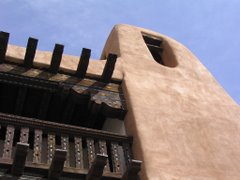The Sandhill Cranes return to the Open Space Visitors Center!
The success of an omnivore is measured in oneness with the present. Serenity produced by soft and deliberate footsteps reveals abundance within our chosen resting places. To live adroit and unencumbered is our desired path on earthen soil and above it. That path will lead us south soon. Days pass. The aperture of warmth and light has come and gone in our summer home, so too have the many blessings of abundance grown scarce. We listen to and feel the season’s messages for our bodies are shaped by them. Eons of ancestral migration have carved our wings, our patterns, and presence into the banks and slopes of this river, embedded in clay and sand lay our deliberate footprints. Tethered golden leaves sigh, a chill whispers across the glassy surface of the river. Our direction is clearly marked by gravity’s tow. It is time to go…
Cool weather has crept into our socks chilling our toes and inspiring warm drink and flannel sheets once again. The onset of golden yellows, rusty reds, earthen browns and contrasting blues and grays ignite transition in our lives as the season moves into winter. Suddenly you hear it. It bubbles up from somewhere…. you look around; the sound is at times clear, at times muffled. It finally occurs to you to look upward into the vivid blue of the sky. There in perfect formation is a squadron of birds soaring high above. Their general direction is south. They too have been touched by the chill of the cool months and are in search of a hardy supply of food. The cranes have come back to accompany us for the winter months.
At least that is how we feel here at the Open Space Visitor Center (OSVC). In preparation for the return of the Sandhill crane we have grown many acres of sorghum and alfalfa for our omnivorous friends. The Rio Grande Valley has been and continues to be the ancestral winter home of the Sandhill crane (Grus Canadensis) and Whooping crane (Grus Americana).
A Miocene crane fossil, thought to be roughly ten million years old, was found in the Midwest. The fossil is the spitting image of our modern Sandhill crane and denotes the crane as the oldest known bird species. Cranes have followed their ancestral flyways for all these years and, like the Midwest, the Southwest has its ancient flyways. The Rio Grande, not known for its deep waters or wide channel, is known for the distance it travels in order to finally reach the ocean. Gaining most of its grandness at the Southern border between New Mexico, Texas and Mexico, the river serves as a guide way and safety corridor for our friends in the Grus family.
These cranes have established important rest stops and winter homes within the Rio Grande Valley. However, their habitat is susceptible to change. Oxbows, riparian areas and savannas within the valley are swallowed up by development and many other disturbances. These traditional safe havens for the birds are replaced by harvestable crop land and parking lots. It only makes sense to offer these ancient travelers an alternative for safety and security. Places such as the Bosque del Apache, Sevilleta National Wildlife Refuge, Candelaria Farm, and Open Space Visitor Center are identified places of refuge for such birds. Each sanctuary grow a percentage or wildlife crop which these birds feed on throughout the winter.
This morning I witnessed from the window of my office the familiar slow descent of three Sandhills in our sorghum fields….the first of many guests to come. These animals are charming to watch as they posture and dance asserting their dominance or simply play in courtship. They keep close tabs at an onlooker’s distance: people, coyotes, foxes, and cats all fall within a “dangerous” category for the crane. Humans may come no closer than 40-50 feet. So if you would like to view these animals it is wise to bring binoculars. Here at the OSVC we welcome those who desire to see these birds in mass. Additionally, because the OSVC is located in Albuquerque, we offer great viewing opportunities of these birds for local folks who don’t want to travel very far.
The Open Space Division invites all interested parties to come and enjoy the return of the cranes with us here at the Visitor Center. We offer many experiences including an art gallery, a collection of permanent and temporary exhibits, Bosque walks, volunteer opportunities and of course wildlife viewing. The VC is located east of Coors Road between Montaño and Paseo del Norte on Bosque Meadows Road. Visit us on the web http://www.cabq.gov/openspace or call 897-8831 for more details. Come, be our guests.
Jodi Hedderig
Visitor Center Manager
Open Space Division
P:(505) 897.8831
F:(505) 897.0572
http://www.cabq.gov/openspace
Subscribe to:
Post Comments (Atom)

No comments:
Post a Comment